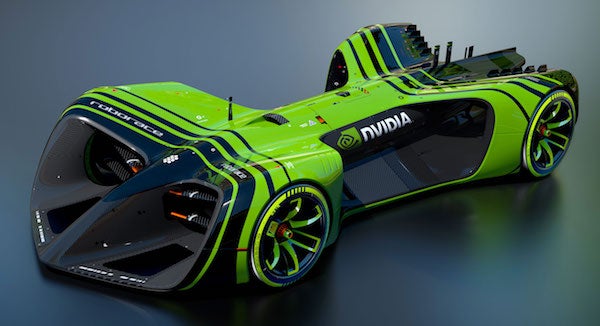 "Grindintosecond" (Grindintosecond)
"Grindintosecond" (Grindintosecond)
04/14/2020 at 00:20 ē Filed to: None
 0
0
 9
9
 "Grindintosecond" (Grindintosecond)
"Grindintosecond" (Grindintosecond)
04/14/2020 at 00:20 ē Filed to: None |  0 0
|  9 9 |

!!!error: Indecipherable SUB-paragraph formatting!!! . It is older but not much has changed since it was published in January of Ď19, except for the Super cards, which are only 8-10% better th an the stock 2060,70,80 cards. If you have any of these cards, please consider putting them in play for the extra points. Also in !!!error: Indecipherable SUB-paragraph formatting!!! currently as of April, 2020.
 themanwithsauce - has as many vehicles as job titles
> Grindintosecond
themanwithsauce - has as many vehicles as job titles
> Grindintosecond
04/14/2020 at 00:49 |
|
For those with gaming laptops with the GTX 10 series cards, those are roughly comparable to the desktop cards with about 5-10% decrease due to power restrictions, but the core is the same. Older generations used to use a cut down core to get power demands but the 10xx cards just reduced power and clock speeds a bit. So donít forget about your laptops!
Think of it this way - if the desktop model is a bacon cheeseburger with fries, the old laptops would take away the fries and the bacon but still call it a bacon c heeseburger w/ fries. THe 10xx series cards just use a 4oz patty instead of a 6oz patty but you still get the bacon and fries with it and in a convenient to-go box!
 PyroHoltz f@h Oppo 261120
> Grindintosecond
PyroHoltz f@h Oppo 261120
> Grindintosecond
04/14/2020 at 00:55 |
|
Thanks for the links.
This just makes me hate my main system .... h aha.
 facw
> Grindintosecond
facw
> Grindintosecond
04/14/2020 at 01:01 |
|
As far as I can tell, the expected point value for all GPUs is near 0, since they canít keep them fed. At least for the three Iíve got going:
Geforce 1070
Radeon 5500 XT
Radeon 7870
Though after being idle for a day, I see the 7870 has finally picked up some work (itís expected to take over a day, kind of sad to see a once mighty card brought to its knees, but I guess it is almost 8 years old at this point).
Also Iím irrationally bothered by the fact your link calls the Geforce 10XX cards ď7nmĒ when they are 16 or 14 depending on chip. The 16XX and 20XX cards are built on a 12nm process, and itís rumored that Nvidia hasnít been able to get their next-gen cards working on 7nm, and even those will be built on a 10nm process (no idea how true that is).
 PyroHoltz f@h Oppo 261120
> themanwithsauce - has as many vehicles as job titles
PyroHoltz f@h Oppo 261120
> themanwithsauce - has as many vehicles as job titles
04/14/2020 at 01:09 |
|
Great, now Iím hungry for a bacon cheeseburger w/ fries. Thx
 PyroHoltz f@h Oppo 261120
> facw
PyroHoltz f@h Oppo 261120
> facw
04/14/2020 at 01:11 |
|
I thought 7nm didnít sound right for the latest Nvidia stuff, let alone 10xx cards.
 themanwithsauce - has as many vehicles as job titles
> PyroHoltz f@h Oppo 261120
themanwithsauce - has as many vehicles as job titles
> PyroHoltz f@h Oppo 261120
04/14/2020 at 01:14 |
|
Enjoy!
 PyroHoltz f@h Oppo 261120
> facw
PyroHoltz f@h Oppo 261120
> facw
04/14/2020 at 01:15 |
|
Also, for what itís worth, Iíve noticed that putting the GPU to idle, if it hasnít picked up a WU after 6 or 7 attempts , the wait time between tries gets considerably longer with each failed attempt . I find that putting that device to idle (right click device) , waiting a few minutes and then back to non-idle, the wait time drops and itíll usually grab a WU within 5 or 10 minutes. YMMV
 chaozbandit
> Grindintosecond
chaozbandit
> Grindintosecond
04/14/2020 at 06:54 |
|
I use this spreadsheet because the data is displayed in more detail and its colour coded. 16xx mobile cards (non maxQ designs) have PPD roughly similar to early GCN cards, or around RX580 levels.
 Levitas
> Grindintosecond
Levitas
> Grindintosecond
04/14/2020 at 08:03 |
|
Interesting numbers. I have a 1070FE, this list says it should do 600k+ PPD. Iíve noticed that while running a WU, it only seems to load up to 40%, and Iíve been somewhere around 170k PPD. I wonder where my bottleneck is.